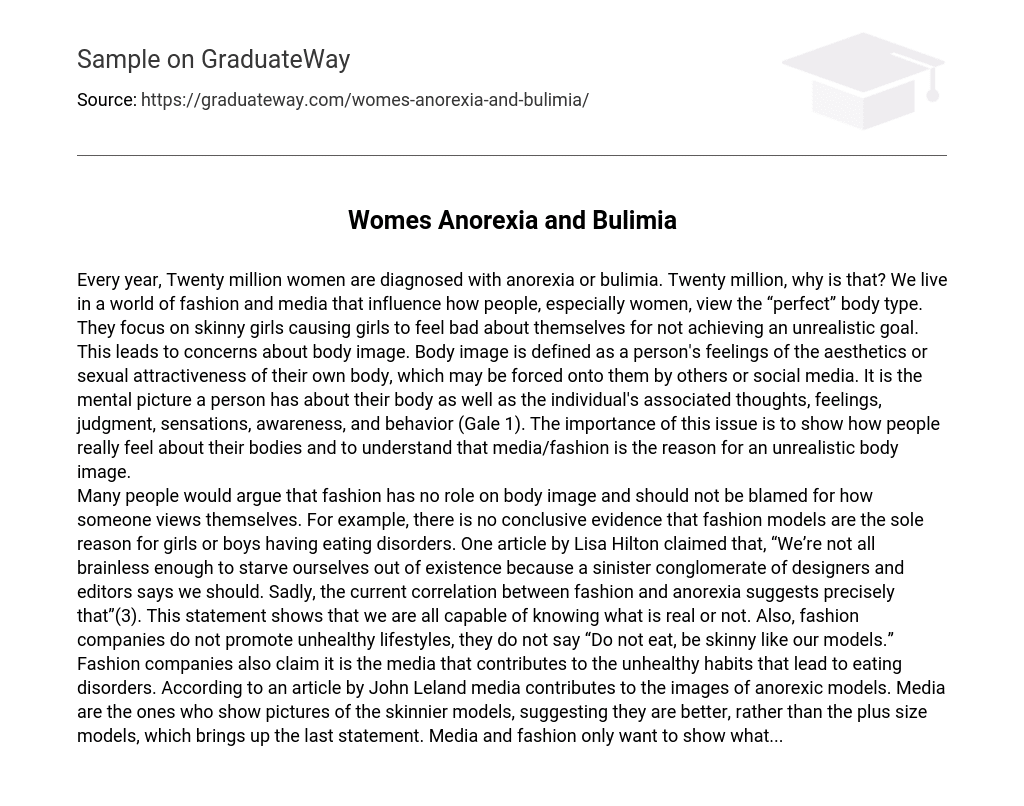Every year, Twenty million women are diagnosed with anorexia or bulimia.
Twenty million, why is that? We live in a world of fashion and media that influence how people, especially women, view the “perfect” body type. They focus on skinny girls causing girls to feel bad about themselves for not achieving an unrealistic goal. This leads to concerns about body image. Body image is defined as a person’s feelings of the aesthetics or sexual attractiveness of their own body, which may be forced onto them by others or social media.
It is the mental picture a person has about their body as well as the individual’s associated thoughts, feelings, judgment, sensations, awareness, and behavior (Gale 1). The importance of this issue is to show how people really feel about their bodies and to understand that media/fashion is the reason for an unrealistic body image. Many people would argue that fashion has no role on body image and should not be blamed for how someone views themselves. For example, there is no conclusive evidence that fashion models are the sole reason for girls or boys having eating disorders. One article by Lisa Hilton claimed that, “We’re not all brainless enough to starve ourselves out of existence because a sinister conglomerate of designers and editors says we should.
Sadly, the current correlation between fashion and anorexia suggests precisely that”(3). This statement shows that we are all capable of knowing what is real or not. Also, fashion companies do not promote unhealthy lifestyles, they do not say “Do not eat, be skinny like our models.” Fashion companies also claim it is the media that contributes to the unhealthy habits that lead to eating disorders. According to an article by John Leland media contributes to the images of anorexic models. Media are the ones who show pictures of the skinnier models, suggesting they are better, rather than the plus size models, which brings up the last statement. Media and fashion only want to show what…





